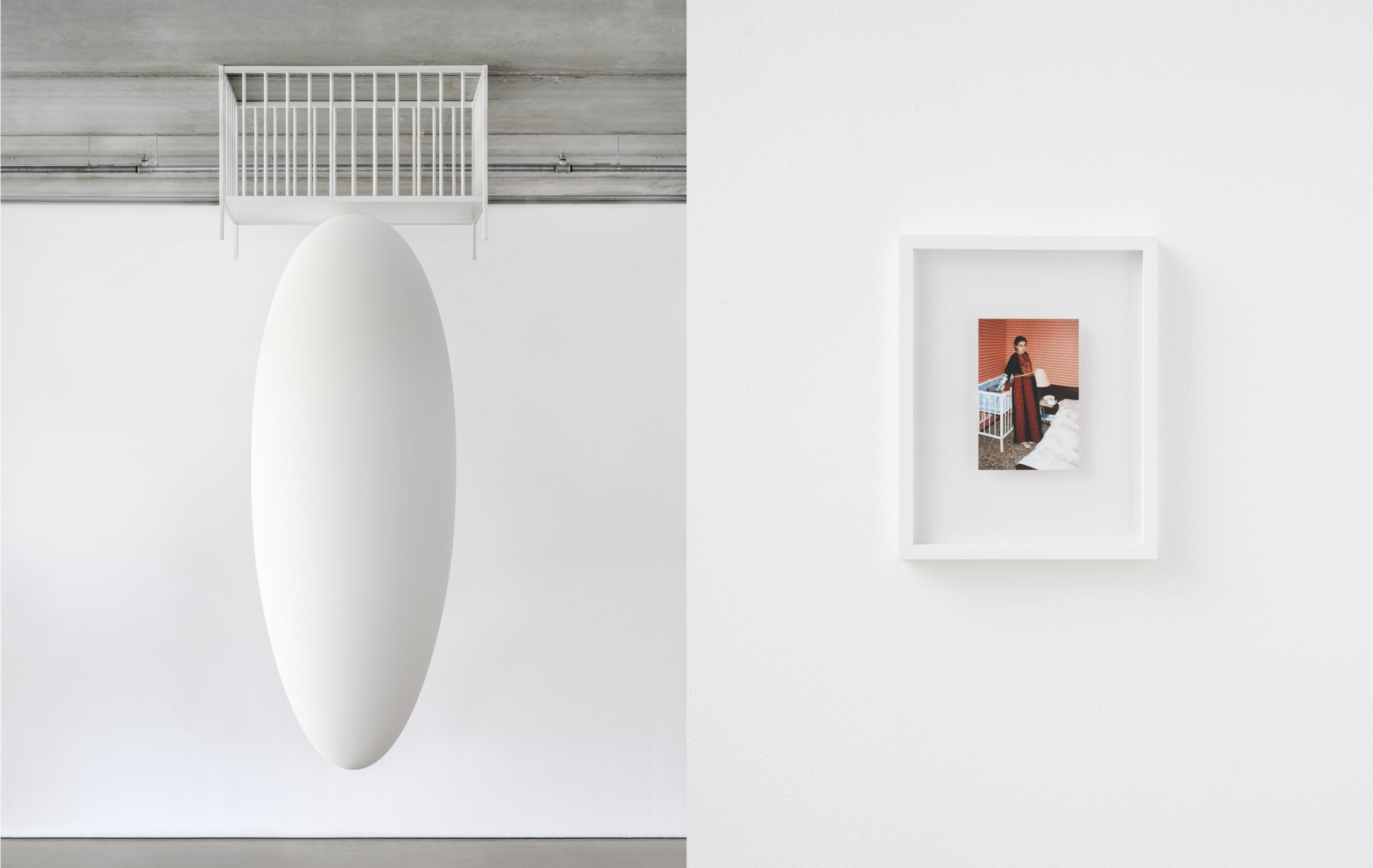YM: The starting point for the new artwork The Cradle is a picture you found in your family photo album – tell us about this picture, and what it means to you.
TK: I like how that photograph holds many layers: The insecure gaze of a newly-arrived immigrant in Sweden (my mother), wearing a traditional dress from the home country, the setting of a small 80s social housing apartment in the suburbs, a new crib bought at Sweden’s largest and cheapest furniture department store (IKEA), a baby on the way… We are on the threshold between past and future. The beginning of a new life, which is still anchored somewhere in the past. The end of how things used to be, and how they have already started to change. The photograph is a decisive moment in time. It’s an image of my own becoming, but I also think it speaks of a specific time in the history of migration in Sweden. All these layers would shape me profoundly.
YM: This work is deeply intertwined with your family history: It refers to subjects relating to rootlessness, memory, heritage, identity, and is ultimately about metamorphosis. Could you elaborate on this?
TK: When I speak of metamorphosis it’s often through the prism of migration. The metamorphosis one undergoes to adjust and adapt to a new country and society, like my parents for example. But above all it’s what displacement means intergenerationally that interests me. I have been shaped by many contradictory experiences and cultures. I consider the self as something unstable, always subject to change. The interstitial space I live in has shaped my entire practice as an artist. The question of loss has also been a driving force in my work. How, through loss, something else is acquired. I think of words like rootlessness or memory loss. Though the words inevitably relate to notions of suffering, they are also followed by the necessity to regenerate. This is where the subject of birth is important to me. It is in the void of loss that new things must emerge. The Cradle is perhaps one of my most personal works to date, because its source is anchored in the photograph we spoke of earlier. But a cradle is also a universal form. Something we can all relate to and that carries collective ideas linked to becoming and birth.
YM: The sculpture is pressed against the ceiling as if it had levitated, rebelling against the laws of gravity. Could you explain what it manifests?
TK: It’s as if it had lost gravity and stuck to the ceiling. The idea of levitation is something I come back to in several works. I think of levitation as a psychological condition, relative to ideas of rootlessness. The word became a way to speak of my own existence: To always drift between cultures, languages, and contexts. Losing ground, or existing in a suspended state, is probably something we can all relate to on some level, in a world where uncertainty governs the political, economic, and ecological aspects of our lives.
